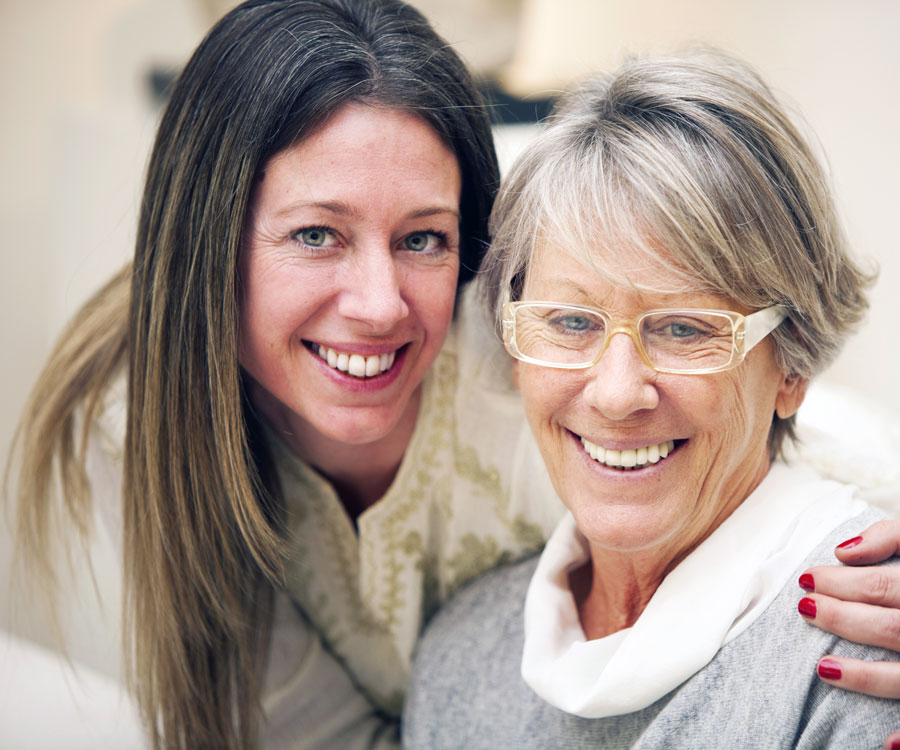How Effective is Intensive Speech Therapy for People with Aphasia? UMAP Client Outcomes
The question most people have when considering the U-M Aphasia Program is: Does intensive aphasia therapy work? While the results will be different for each person, our decades of experience and qualitative and quantitative measures tell us the short answer is: yes.
Overall, averaged client scores increased

This overview of outcomes is from U-M Aphasia Program client data collected since 2011. The information here is representative of an average full-time intensive UMAP experience.
We're using several data points, including the Western Aphasia Battery - Revised (WAB-R) scores as benchmarks.
While the numbers are compelling, they don't tell the whole story. For example, UMAP clients often show gains in confidence and independence, key parts of recovery that aren't necessarily reflected on standardized assessments.
Outcomes can also vary based on type and severity of aphasia.
"UMAP adds value to stroke victims' quality of life. My daughter was not using any verbs when she arrived at UMAP. She works hard daily to speak and form sentences, and now she has tools... She felt she was just getting started!"

Why WAB-R Scores?
The Western Aphasia Battery-Revised (WAB-R) assessment is used across health care settings to gauge the language function in adults following stroke, head injuries, and certain illnesses. It helps clinicians determine the presence, degree of severity, and type of aphasia a person may have. It also serves as a benchmark to show progress throughout a person's time in therapy.
The scores here reflect the outcomes of tests administered to clients before and after their initial U-M Aphasia Program session (i.e., does not include cumulative gains from repeated intensive therapy).
How UMAP Clinicians Use the WAB-R
We use the WAB-R as one of our baseline measures for gathering information about the client’s overall performance with speaking, understanding, reading, and writing. It is a stepping stone to help us see where each client's communication strengths and challenges are in a structured and measurable manner.
It is just one piece of our UMAP assessment, which also typically contains other formal and informal, functional, and daily life measures that help us tailor our approach for each client's aphasia recovery. Our program is highly individualized and begins with understanding not just test and assessment scores, but also the person with aphasia.
Scores increased significantly for all, including people who have had aphasia for years.

People who have had aphasia for one year or less showed a 22% increase in WAB-R scores. People who have had aphasia for more than one year showed an 18% increase after one intensive, individualized UMAP session.
The general advice you might hear is that after one year, speech-language therapy for aphasia is not worth pursuing.
We know that's not true.
At UMAP, we consistently see clients make gains in their communication skills years after their incident. With the type of intensive and individualized therapy our program provides, we have seen clients make changes years into their recovery, sometimes even 5, 10 or more years after they first acquired aphasia.
With intensive, comprehensive aphasia therapy, a client who is motivated and interested in their continued recovery typically will make similar gains to those who we see that are just one year post onset of aphasia. In addition to WAB-R scores and other formal assessments demonstrating marked improvement, clients also show increased independence and confidence after a UMAP session, no matter what stage of recovery.
How Progress is Measured Beyond Testing Data
Not all gains are measured on the quantitative scale and may not look how you expect them to look.
We see people with different types and severity of aphasia show progress in a variety of ways beyond just test measurements. For example, we often see or hear from care partners that clients are:
"Fabulous therapy. Know that the numbers didn't seem that great — but my sister's speech improvement has been more than I thought could ever happen. The entire staff is friendly and welcoming."
Where in the U.S. do UMAP clients come from?
Ready to Take the Next Step?
If you'd like to find out more about what the U-M Aphasia Program could do for you or your loved one, here are several next steps you can take:
- Call (734) 764-8440 to speak to a clinic representative during business hours. You can call outside of business hours as well and we will return your call as quickly as we are able. Our clinic specialist will gather basic information from you and will arrange a phone call or visit with the clinic manager to help you assess if UMAP will be a good fit.
- Email us at UCLL@umich.edu (please note: email is not secure - do not share personal medical information) to get the conversation started.
- Learn more about the program through our website. Click one or more of the below links to get to know us better:
Application Center
If you're ready to apply, visit the UMAP application center to learn more about what is needed to apply and to access the secure online application. Paper applications are also available by request.
